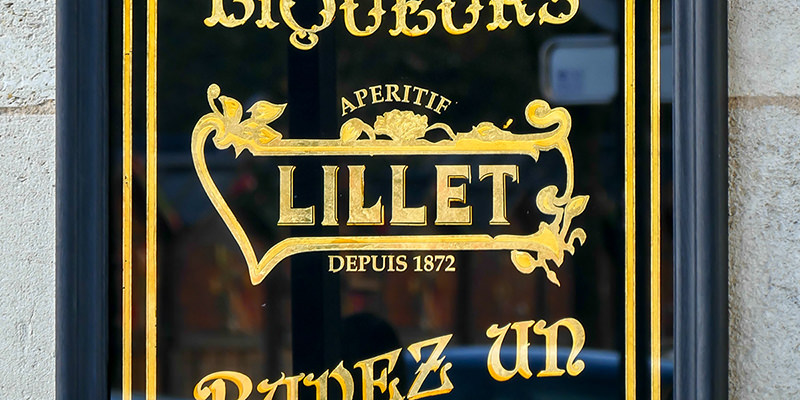You know how people are really into telling each other they’re “doing it wrong” these days? OK, yeah, so mostly it’s us—Internet perpetrators banking on everyone’s latent insecurities to trick them into reading articles about peeling zucchini and choosing paint colors.
Well, this is another one of those, except we don’t really want to say “you’re doing it wrong” when we bring up the fact that you’re probably not drinking Lillet. First of all, most of us are doing it wrong. Lillet is one of those elegant but intimidating-looking bottles that tends to sit lonely on a bar shelf while we catch up with more familiar friends like Jameson and Patròn. And then there’s the fact that the word “Lillet” sounds too polite for Internet shaming. So instead, may we mildly suggest that you put some delicious Lillet into your life before summer’s out?
Seriously, drinking a glass of Lillet over ice is the metaphorical yachting trip you never got to take this summer. If the closest you got to summer luxury was enjoying the free air-conditioning at the mall, make up for it with a glass of this liquid sunshine.
First, of course, you’ll want to know what it is. Besides liquid sunshine. Like vermouth, Lillet is a fortified, aromatized wine made with white Semillon and Sauvignon Blanc grapes from Bordeaux, flavored with things like spice, herbs and citrus, and then fortified (i.e., the ABV is dialed up) with citrus liqueur. Unlike vermouth, however, Lillet is almost always taken as an aperiti, and was originally created as a vehicle for quinine (the anti-malarial stuff that makes tonic water taste bitter).
In fact, the bitterness of quinine is what Paul and Raymond Lillet were building around when they first developed their product, originally called Kina Lillet, in 1887. Sort of a “spoon full of sugar makes the medicine go down” principle that many followed when they were making quinine-based drinks (collectively known as “quinquinas”) in the 19th century.
Fun — or devastating — fact, depending on whom you ask: in 1985, the Lillet company actually removed the quinine and renamed its flagship drink Lillet Blanc. A lot of people who’d previously fallen in love with the original Kina recipe got variously pissed off, depressed, desperate for a substitute, etc. Haters aside, Lillet Blanc is indeed a very delicious and, incidentally, a summer-perfect drink. Which, we can’t insist enough, will absolutely make you feel like you’re prancing around Riviera beach, possibly while wearing a kaftan.
As for what you’ll be tasting when you douse those lucky ice cubes with Lillet: predictably, without the quinine, the Lillet Blanc flavor profile gets a bit lighter, a bit fruitier. But complexity’s not lost: Lillet Blanc has some almost savory herb-like flavors swimming around (rosemary, mint), plus honeyed florals and bittersweet citrus notes from the citrus liqueur. Not that it ends heavy; the sip ends with a palate-cleansing acidity (like someone coming to scrub the deck of your yacht?). And even though it’s fortified, it’s only 34 proof, or 17% ABV, basically like a super-strong wine.
Not to confuse you, but there are other kinds of Lillet: a “Rouge” variety that’s red Merlot-based and a bit less complex, and (the inevitable?) “Rosé” variety that’s gotten some serious traction since its release in 2012. The Rosé is a lot closer to the Blanc than the Rouge, with some of the same bittersweet citrus at its core, plus soft, lush berry flavors. Which is why, like Lillet Blanc, it’d also make a great “My air conditioner broke I deserve this” consolation prize.
So buy a bottle, they’re almost always under $20, and pour some luxe into your summer.
Header image via nbnserge / Shutterstock.com

